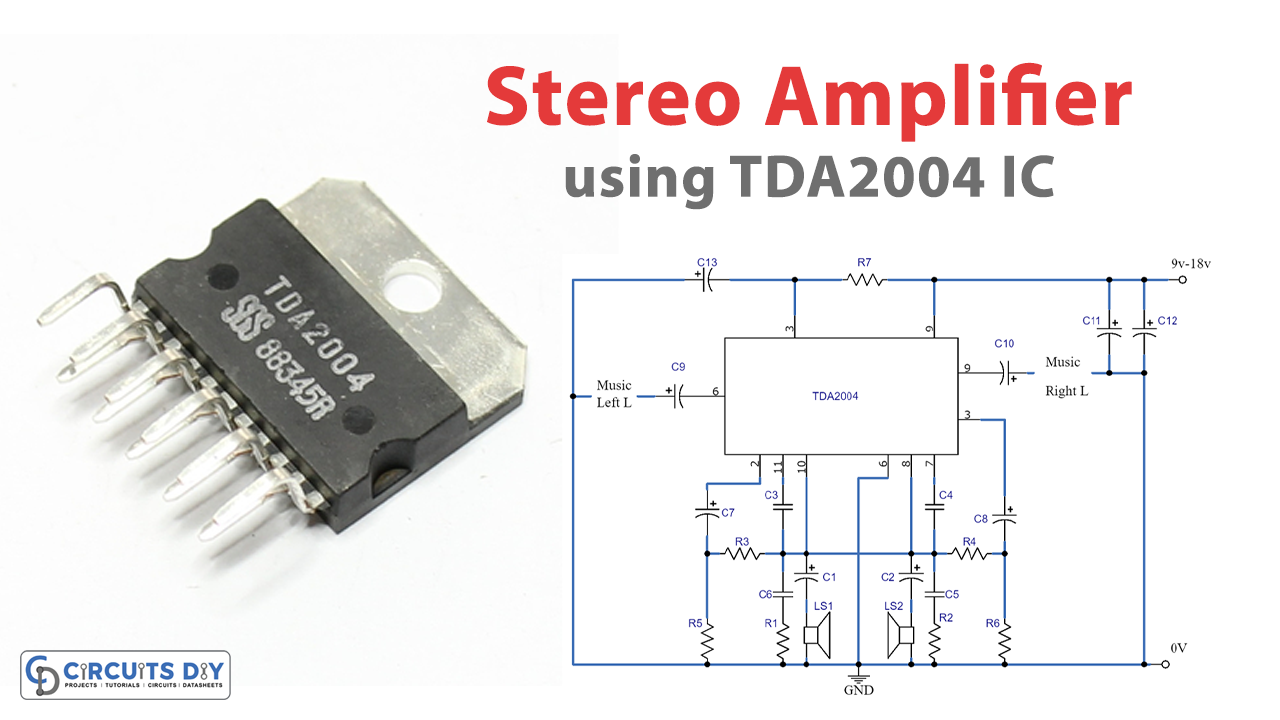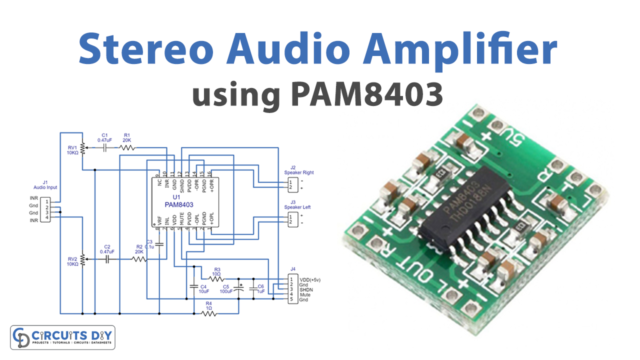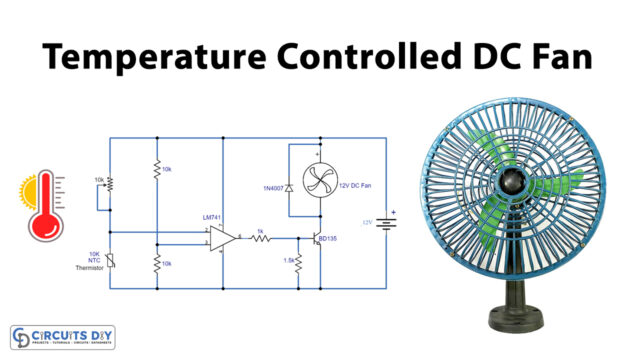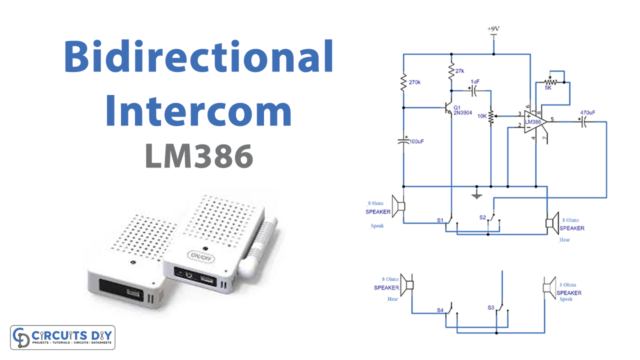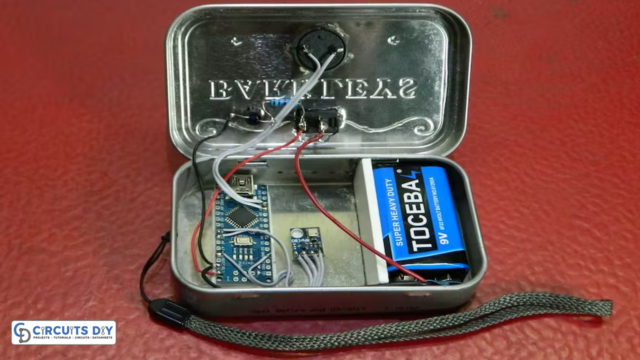Introduction
A stereo amplifier circuit is a device that amplifies low-level audio signals from an audio source, such as a smartphone or MP3 player, to drive a pair of loudspeakers. A straightforward way to build a stereo amplifier is using an integrated circuit (IC) such as the TDA2004. In this guide, we will walk you through constructing a stereo amplifier circuit using the TDA2004 IC.
The TDA2004 is an IC that provides 10 watts of output power per channel, making it suitable for small- to medium-sized speaker systems. It has a built-in thermal protection circuit, which helps prevent damage to the IC in case of overheating. Additionally, it has low distortion and noise levels, making it ideal for audio applications. With its compact size and ease of use, the TDA2004 is a popular choice for hobbyists and DIY audio enthusiasts looking to build a simple, cost-effective stereo amplifier circuit. Let’s dive further to understand the circuit!
Hardware Required
You will require the following hardware for Stereo Amplifier Circuit.
| S.no | Components | Value | QTY |
|---|---|---|---|
| 1 | IC | TDA2004 | 1 |
| 2 | Polar capacitor | 2200, 100, 220, 2.2, 470, 10uF | 2, 2, 2, 2, 1, 1 |
| 3 | Non polar capacitor | 100nF | 3 |
| 4 | Resistor | 1, 1.2k, 2.2, 120k | 2, 2, 2, 1 |
| 5 | Speaker | 4ohm 10W | 2 |
Circuit Diagram
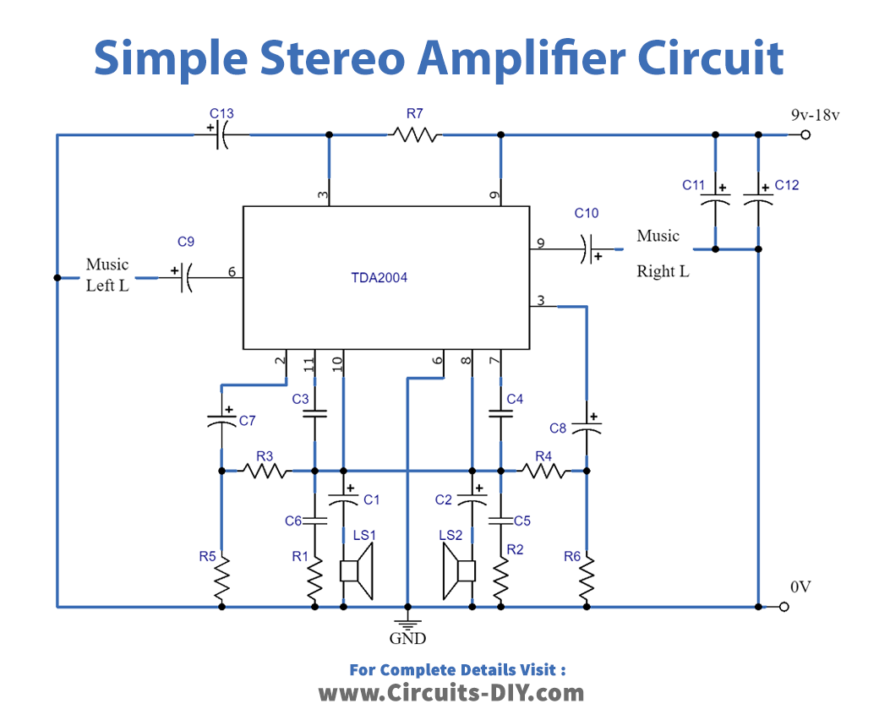
Working Explanation
Performance
With a supply voltage of 14.4V (a fully charged car battery), the stereo amplifier has a minimum power output of 6W with a load impedance of 4Ω and a minimum power output of 9W with a load impedance of 2Ω. The distortion is around 10% for the maximum power output and less than 0.3% for reduced power outputs.
Input Sensitivity
The voltage gain of the left-hand channel depends on the ratio of R3 to R5 and that of the right-hand channel on the ratio of R4 to R6. With the given values, the voltage gain is 50dB, and a signal of 50mV is needed at the input for the maximum output. If the input sensitivity is high, you can add a 50kΩ stereo potentiometer to the input. The impedance of the non-inverting amplifier input is at most 100kΩ.
Stabilization
The system composed of resistor R1 and capacitor C5 (and R2, C6) is added to prevent instability at high input frequencies. The circuit’s bandwidth is sufficient for audio stereo amplification purposes with a frequency response of 40Hz to 16kHz (3dB level).
Cooling
The IC should be adequately cooled, and the thermal resistance of the heatsink should be at least 4°C/W.
Final Words
In conclusion, building a simple stereo amplifier circuit using the TDA2004 is easier. We hope this guide has provided you with the information and inspiration you need to start. If you have any questions or feedback, please don’t hesitate to comment below. We’d be more than happy to help you with your project. Happy learning!


